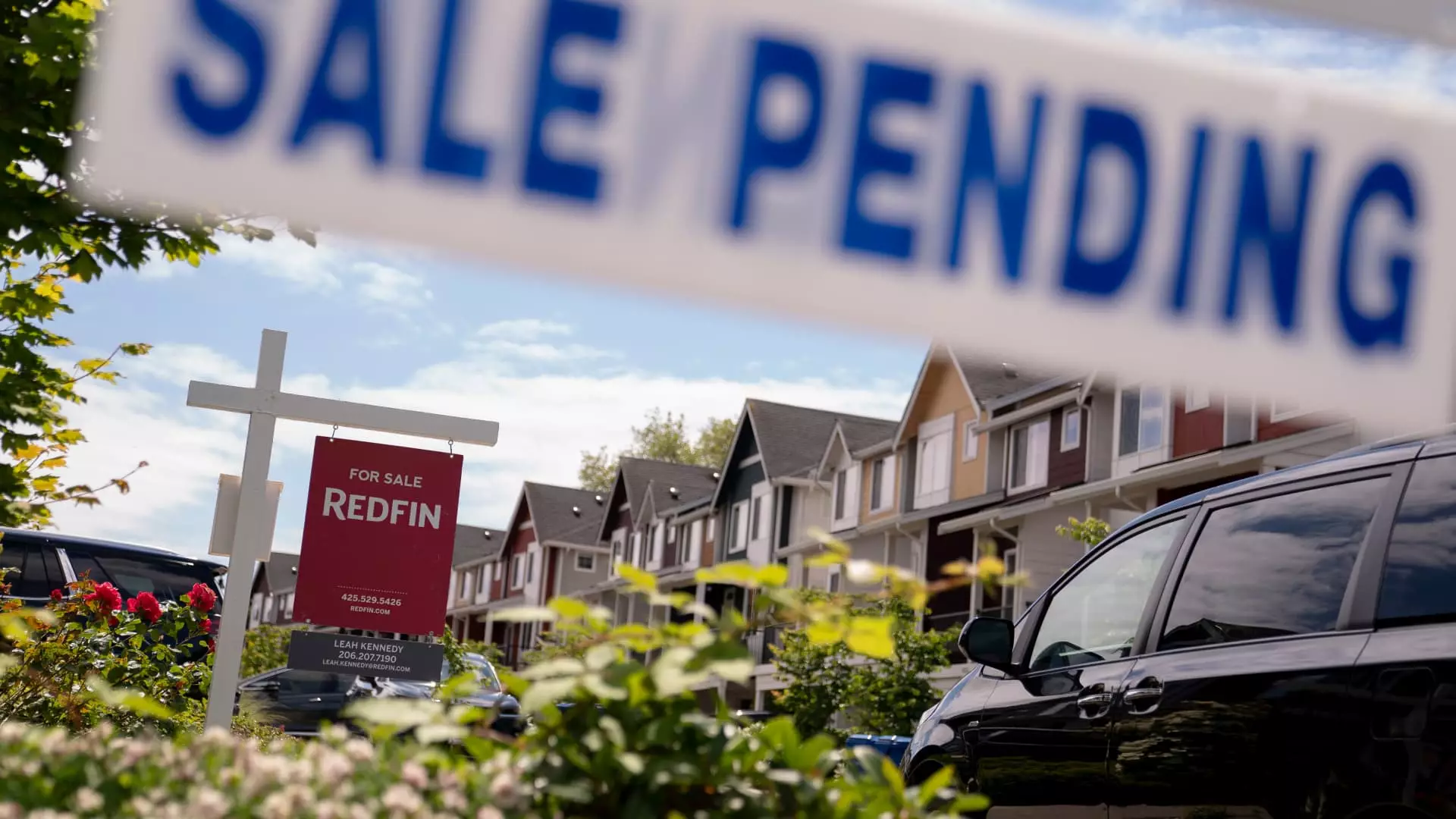In a shocking turn of events, mortgage rates have surged to levels not seen since February, presenting a daunting challenge for potential homebuyers across the nation. Last week, the Mortgage Bankers Association reported an alarming 8.5% fall in total mortgage application volume, a stark reflection of a rapidly changing economic climate. As rates strike 6.81% for the average 30-year fixed-rate mortgages, even those with sufficient down payments are feeling the pressure. This exponential rise in costs not only complicates the buying process but also sparks a worrying trend—homebuyers resorting to riskier loans in a desperate bid for affordability.
The Psychological Toll on Homebuyers
It’s important to recognize the psychological strain these rising rates impose on prospective homebuyers. With economic uncertainty looming over the horizon and fluctuating rates causing unease, many potential buyers are hesitating to make significant financial commitments. Mike Fratantoni, a noted economist, highlighted this hesitancy, suggesting that the fear of prospective payments spiraling out of control pushes buyers to reconsider their purchasing power. In a market traditionally built on stability and fixed rates, this wave of anxiety can stifle the confidence necessary for making long-term financial decisions.
Inflated Prices in a Competitive Market
Adding fuel to the fire is the fact that home prices continue to hover above last year’s levels, thus exacerbating affordability issues for many. As buyers grapple with higher borrowing costs, the additional burden of inflated prices creates a dire situation. Although inventory levels are reportedly 30% higher than a year ago, the market remains competitive, often skewed in favor of sellers. Buyers are left scrambling to find suitable homes, while simultaneously facing an uphill battle against both rising expenses and increasing competition—a recipe for frustration and, ultimately, missed opportunities.
The Allure of Adjustable-Rate Mortgages
In response to these swelling rates, a noticeable pattern is emerging as more borrowers pivot towards adjustable-rate mortgages (ARMs). Fratantoni noted an unexpected spike in ARM applications, which surged by a full percentage point in just one week. While ARMs do present a temporary solution by offering lower initial rates, they come with inherent risks that cannot be understated. What begins as a saving grace may quickly morph into a precarious situation when rates inevitably adjust higher. Buyers may feel an overwhelming sense of urgency to lock in these lower rates, but it’s crucial they weigh the long-term consequences against their immediate desires.
Refinancing in a Risky Climate
The refinancing landscape is not faring much better as it too reflects the staggering reality of rising rates. While applications for refinancing are still 68% higher than last year, they dropped a notable 12% just last week. The fluctuating rates compound the struggle, with borrowers now facing increasingly challenging decisions about their financial futures. As countless homeowners scramble to take advantage of the lower rates from last year, it’s apparent that desperation lurks around every corner in this volatile environment. Homeowners who previously enjoyed the comfort of fixed rates now find themselves caught in a storm of uncertainty, questioning whether to refinance or endure higher payments.
Long-Term Implications for the Housing Market
Looking ahead, the potential for further volatility lingers ominously in the backdrop of this current market. Although experts noted a slight reprieve in rates to begin the week, the notion that things won’t worsen promotes a false sense of security. The unsteady nature of today’s economy calls for vigilance and a comprehensive understanding of the shifting mortgage landscape. Homebuyers must navigate this turbulent terrain with caution, recognizing that the decisions they make today may have long-lasting impacts on their financial health and aspirations for homeownership.
Ultimately, while the struggle for affordable housing persists, it is accompanied by a nagging sense of optimism among those willing to adapt. In times of uncertainty, our resilience is often tested, making this an incredibly pivotal moment for the future of home ownership.

